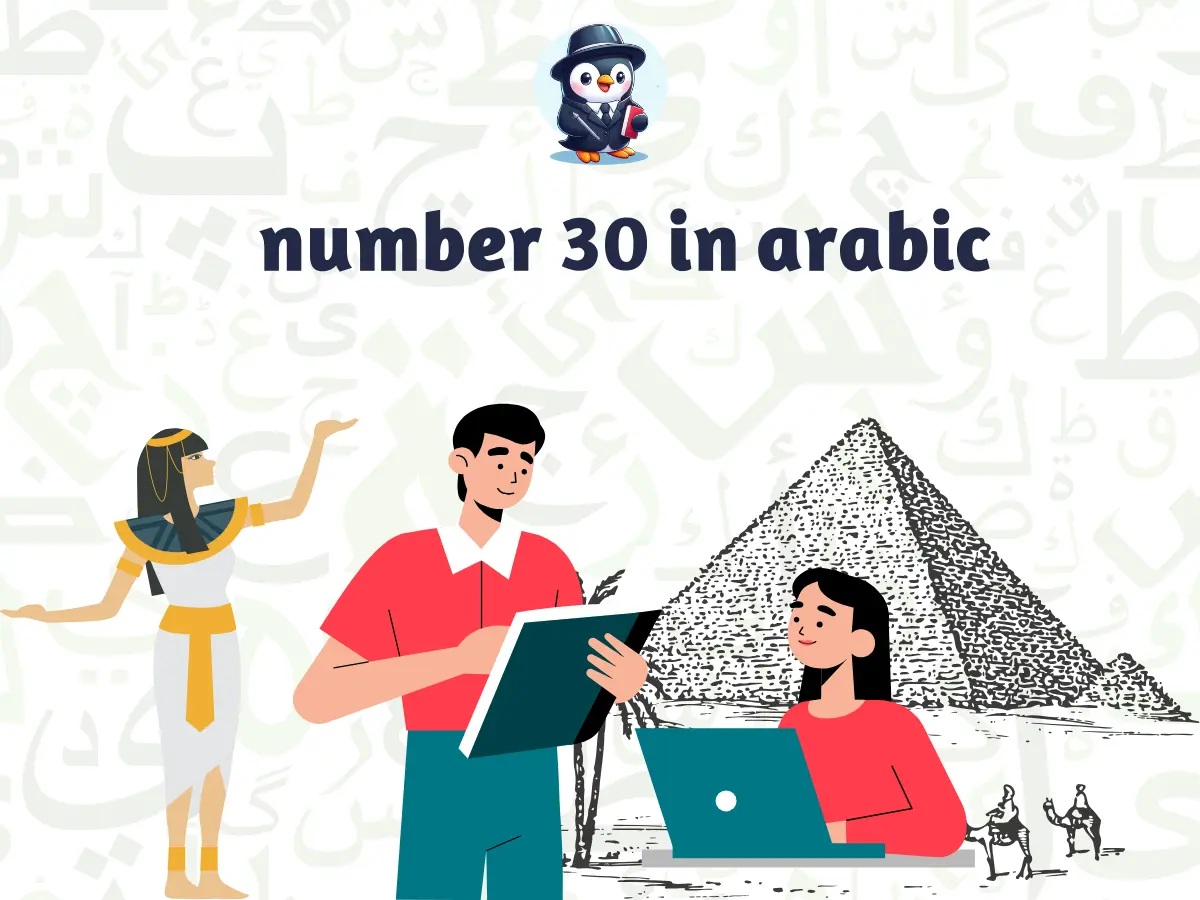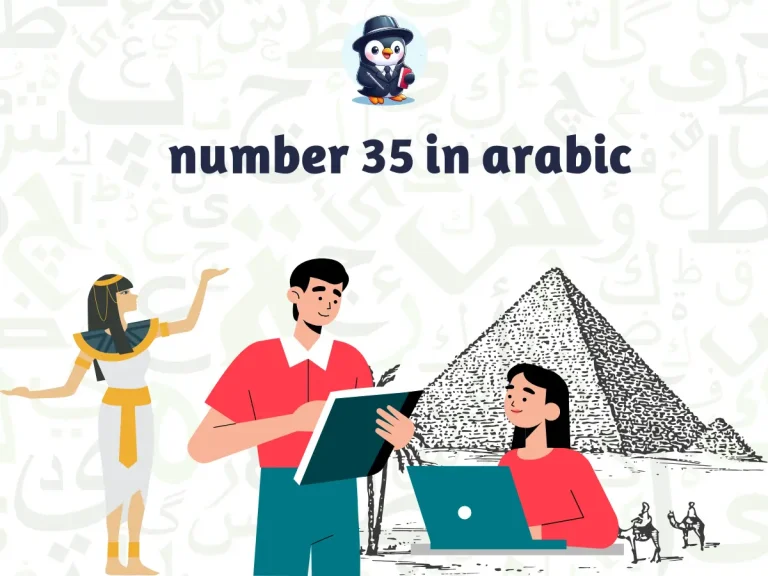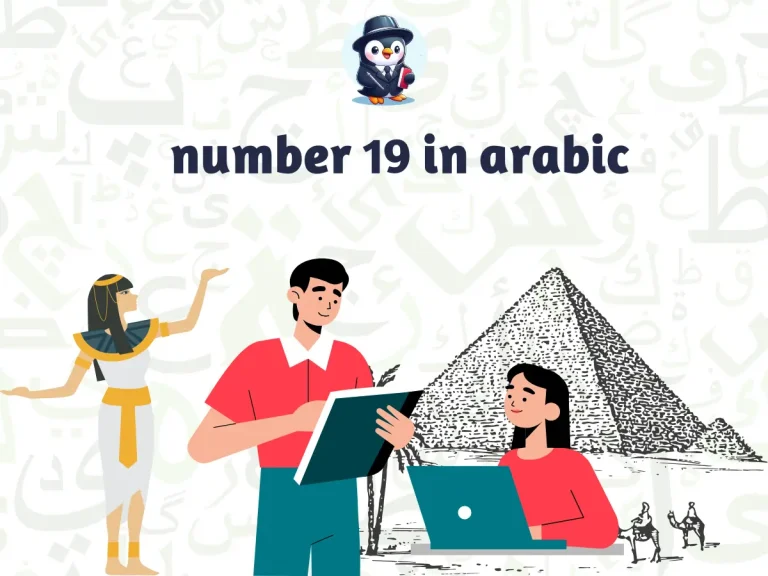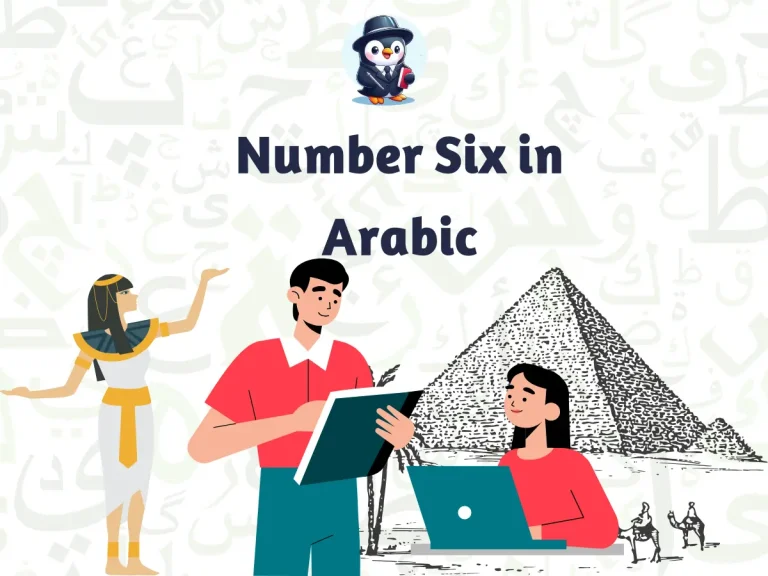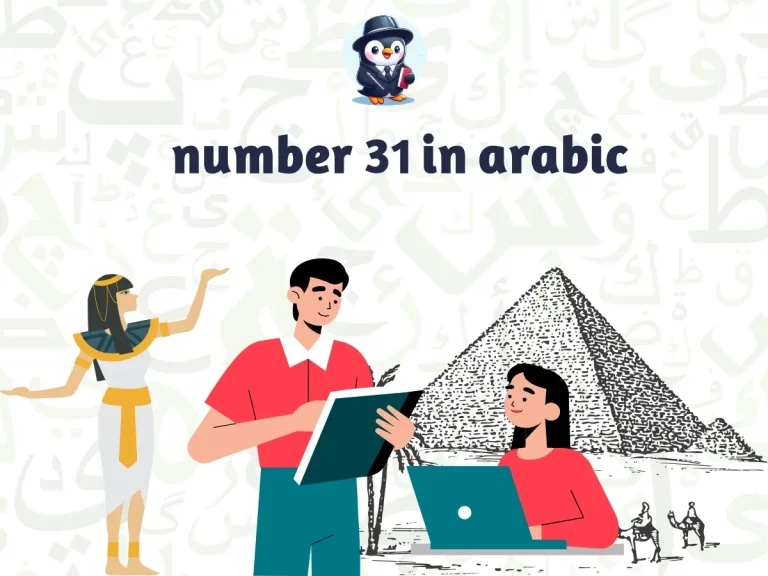number 30 in arabic pronunciation & writing
The number 30 in arabic, “Thalathoon” (ثلاثون) in Arabic, represents a milestone in navigating the language with confidence.
It transcends its numerical value, serving as a cornerstone for expressing larger quantities, potentially holding cultural significance, and acting as a stepping stone towards fluency.
Here’s a deep dive into the importance and diverse uses of “Thalathoon” in the Arabic world:
To learn more about the rest of the numbers from 1 to 100, you can visit this link: Arabic numbers 1 to 100
number 30 in arabic: Essential for Daily Transactions
Arabic uses numerals for expressing quantities exceeding the base-ten system in everyday situations.
Mastering “Thalathoon” empowers you to confidently navigate pricing in markets, bargaining effectively, and discussing larger measurements.
- Imagine negotiating the price of a rug (“yatlub khamsīn wa-naqbal bi-thalathīn” – he asks for fifty, but we counter with thirty)
- or ordering groceries (“aabtu thalathoon mil Milliliter min zayt al zaytoon” – I bought thirty milliliters of olive oil).
number 30 in arabic: Unlocking Dates and History
Dates on historical buildings, monuments, and documents are often written in numerals. Knowing how to read “Thalathoon” allows you to decipher these historical references.
- An inscription mentioning (توفي العالم سنة ثلاثين بعد المئة) (tawafā al-ʿālim sanat thalathīn baʿda al-miʾah)
translates to “the scholar passed away in the year thirty after the first hundred,” offering a glimpse into the past.
Cultural Significance While there’s no single, widespread symbolic meaning associated with thirty in Arabic culture, its occasional appearance in folktales or proverbs suggests a potential for meaning.
Understanding such references enriches your cultural appreciation:
Examples in Folktales and Proverbs: number 30 in arabic
A folktale might involve a character who has thirty days to complete a task. A proverb might use the number metaphorically
- , for example, “مرت ثلاثون سنة على هذا الحدث” (marrat thalathūn sanatan ʿala hadha al-hadath) which translates to “thirty years have passed since this event,” implying a significant amount of time.
A Stepping Stone to Complex Quantities: Understanding “Thalathoon” lays the foundation for expressing even larger quantities with ease.
It becomes a building block for numbers like sixty (sittin – ستون) and ninety (tisʿoon – تسعون).
- Imagine discussing travel distances (“المسافة إلى مدينة جدة ثلاثمائة كيلومتر” – the distance to Jeddah is three hundred kilometers) or complex measurements in recipes.
By appreciating the multifaceted nature of “Thalathoon,” you gain a deeper understanding of Arabic communication and develop a foundation for navigating everyday situations, historical references, and even potential cultural nuances.
Thirty serves as a springboard, propelling you towards a richer appreciation of the Arabic language and its connection to the social and historical context it serves.
Thirty: A Cornerstone with Dialectal Nuances in the Arabic Language
The number 30 in arabic, “Thalathoon” (ثلاثون) in Arabic, represents a significant milestone in navigating the language.
Beyond its numerical value, it serves as a cornerstone for expressing larger quantities and holds potential cultural significance.
This overview explores both the importance of thirty and the subtle variations it might exhibit across Arabic dialects.
Importance and Distinction: number 30 in arabic
Essential for Daily Communication: Arabic uses numerals for quantities exceeding the base-ten system.
Mastering “Thalathoon” empowers you to confidently discuss prices, negotiate effectively, and express larger measurements. This is crucial for everyday interactions.
Unlocking Dates and History: Dates on historical sites and documents often appear in numerals.
Knowing “Thalathoon” allows you to decipher these historical references, offering a window into the past.
A Stepping Stone: Understanding thirty lays the foundation for expressing even larger quantities with ease, becoming a building block for numbers like sixty and ninety.
Distinguishing Thirty: number 30 in arabic
Unlike smaller numbers, thirty is a distinct word, “Thalathoon” (ثلاثون), separate from combinations of smaller numbers.
This distinction highlights the importance of learning dedicated terms for larger quantities.
Dialectal Variations (Potential Differences): number 30 in arabic
While “Thalathoon” serves as the standard Arabic form for thirty, Arabic’s rich tapestry of dialects introduces potential variations in pronunciation:
- Egyptian Arabic: The pronunciation might be closer to tlatin (تلاتين), with a softer “t” sound.
- Levantine Arabic: The pronunciation might be closer to tleetin (تلاتين), with a longer emphasis on the “ee” sound.
- Maghrebi Arabic: The pronunciation could vary depending on the specific country, but it might be similar to tlataïn (ثلاتين) with a distinct “a” sound.
Importance of Context: number 30 in arabic
While these variations exist, standard Arabic pronunciation of “Thalathoon” is widely understood.
Being aware of potential dialectal differences demonstrates cultural sensitivity and a deeper appreciation for the richness of the Arabic language.
By understanding both the importance and potential variations of “Thalathoon,” you gain a well-rounded perspective on this cornerstone number in Arabic.
It empowers you to confidently navigate everyday situations, engage with historical references, and appreciate the beautiful tapestry of Arabic dialects.
Writing and Pronouncing number 30 in arabic
The number 30 in arabic, “Thalathoon” (ثلاثون), represents a significant step beyond basic counting in Arabic.
Here’s a comprehensive guide on writing and pronouncing this crucial number with accuracy:
Writing with Clarity: number 30 in arabic
A Single Word: Unlike some larger numbers formed by combining smaller ones, “Thalathoon” is a single word.
- The Arabic Letters: It’s written with the following letters from right to left: ث (tha), لا (laa), ث (tha), و (waw), ن (noon).
| Pronunciation | Arabic | English |
|---|---|---|
| thalathīn | ثلاثين | thirty |
| uḥtāji ilā thalathīn riyālan li-shtiraa’ hadha al-kitaab | أحتاج إلى ثلاثين ريالا لشراء هذا الكتاب | I need thirty riyals to buy this book. |
Pronunciation for Confidence: number 30 in arabic
- Breakdown: “Thalathoon” is pronounced approximately as tha-la-thoon.
- Emphasis: The emphasis falls on the first syllable, “tha.”
Sounds
- The “th” sound is similar to the voiceless “th” in “think.”
- The “a” in “tha” is a short vowel sound.
- The “la” creates a soft “la” sound.
- The “oo” sound is similar to the “oo” in “boot.”
Examples in Action: number 30 in arabic
1- سافرت ثلاثون ساعة بالقطار
saafirtu thalathūn saaʿatan bil-qitaar.
I traveled for thirty hours by train.
2- لدي ثلاثون كتابا في مكتبتي
landee thalathūn kitaban fi maktabati.
I have thirty books in my library.
By mastering the writing and pronunciation of “Thalathoon,” you elevate your ability to navigate everyday situations in Arabic.
This newfound confidence allows you to discuss prices, express larger quantities, and even decipher historical references, all while taking a significant step towards fluency in this beautiful language.

